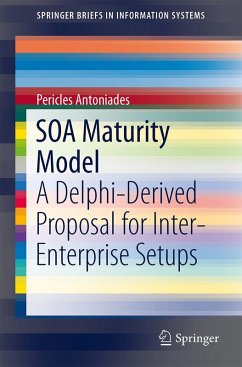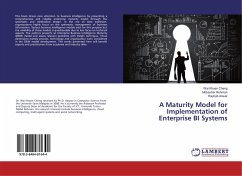Companies have long sought to integrate existing Information Systems (IS) in order to support existing and potentially new business processes spread throughout their "territories" and possibly to collaborating organizations. A variety of designs can be used to this end, ranging from rigid point-to-point electronic data interchange (EDI) interactions to "Web auctions". By updating older technologies, such as "Internet-enabling" EDI-based systems, companies can make their IT systems available to internal or external customers; but the resulting systems have not proven to be flexible enough to meet business demands. A more flexible, standardized architecture is required to better support the connection of various applications and the sharing of data. Service-Oriented Architecture (SOA) is one such architecture. It unifies ("orchestrates") business processes by structuring large applications as an ad-hoc collection of smaller modules called "Services". These applications can be used by different groups of people both inside and outside the company, and new applications built from a mix of services (located in a global repository) exhibit greater agility and uniformity.
Thus, SOA is a design framework for realizing rapid and low-cost system development and improving total system quality. SOA uses the Web Services standards and technologies and is rapidly becoming a standard approach for enterprise information systems integration.
SOA adoption by enterprises has been identified as one of the highest business priorities by a recent Gartner study (Gartner 2007) and enterprises increasingly recognize the requirement for an increased "Service-orientation" and relevant comprehensive frameworks, which will not only help them position themselves and evaluate their SOA initiatives, but also guide them in achieving higher levels of SOA maturity. This in turn, will help enterprises acquire (and retain) competitive advantage over otherplayers in the market who are not (using SOA and thus they are not) so flexibly adjusting themselves to address new business requirements.
This book proposes a new SOA Maturity Model (MM) using a Delphi-variant technique and this constitutes one of its distinguishing features because none of the relevant existing works utilized Delphi. Moreover, the fact that the proposed SOA MM supports inter-enterprise setups makes it even more distinct.
The newly proposed SOA MM is then used to help the participating organizations position themselves in respect to SOA (current status), guide them to achieve higher levels of SOA maturity, and anticipate their SOA maturity in five years' time.
Furthermore, the "local" or "global" nature of the proposed SOA MM is investigated. This is checked firstly against selected expert panel participants and secondly against local business practitioners.
Thus, SOA is a design framework for realizing rapid and low-cost system development and improving total system quality. SOA uses the Web Services standards and technologies and is rapidly becoming a standard approach for enterprise information systems integration.
SOA adoption by enterprises has been identified as one of the highest business priorities by a recent Gartner study (Gartner 2007) and enterprises increasingly recognize the requirement for an increased "Service-orientation" and relevant comprehensive frameworks, which will not only help them position themselves and evaluate their SOA initiatives, but also guide them in achieving higher levels of SOA maturity. This in turn, will help enterprises acquire (and retain) competitive advantage over otherplayers in the market who are not (using SOA and thus they are not) so flexibly adjusting themselves to address new business requirements.
This book proposes a new SOA Maturity Model (MM) using a Delphi-variant technique and this constitutes one of its distinguishing features because none of the relevant existing works utilized Delphi. Moreover, the fact that the proposed SOA MM supports inter-enterprise setups makes it even more distinct.
The newly proposed SOA MM is then used to help the participating organizations position themselves in respect to SOA (current status), guide them to achieve higher levels of SOA maturity, and anticipate their SOA maturity in five years' time.
Furthermore, the "local" or "global" nature of the proposed SOA MM is investigated. This is checked firstly against selected expert panel participants and secondly against local business practitioners.








